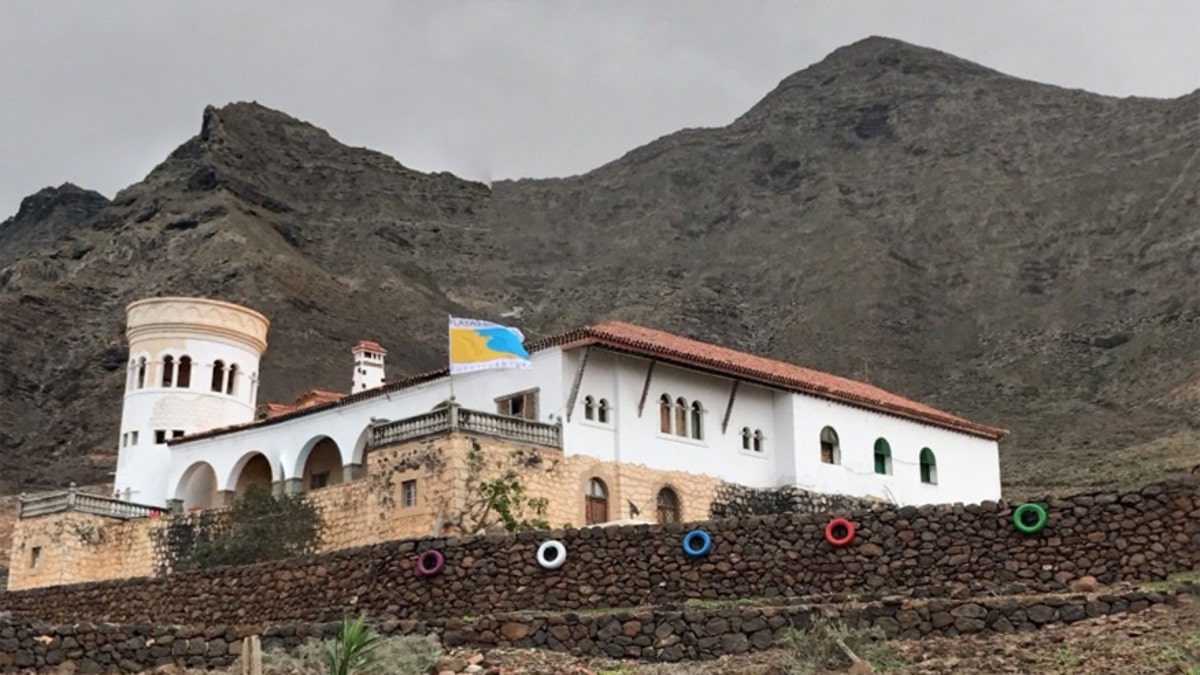
Villa Winter (Google Maps)
The current occupant of a secluded home on one of Spain’s Canary Islands is determined to find out whether it was once used by the Nazis as a secret U-boat base.
Pedro Fumero, who moved into the so-called Villa Winter in 2012 after finding his two uncles and an aunt living there in squalor, believes that the home’s impressive views of Jandía National Park and interesting architecture were all part of a secret Nazi plan to monitor the waters off North Africa during World War II.
While Fumero, whose grandfather helped build Villa Winter, has no evidence to back up the claim, there are numerous architectural and historical quirks that have led the 48-year-old retired taxi driver to believe it was a Nazi hideaway.
First and foremost: The original owner of the house was Gustav Winter.
Born in the Black Forest region of Germany in 1893, Winter moved to the Canary Islands in 1925. The engineer was one of 104 German residents living in Spain who were accused of being Nazi agents. At the end of the war, Allied forces requested they be repatriated.
In 1947, the Madrid bureau chief of the United States’ Office of Strategic Services – the forbearer to the CIA – described Winter as a “German agent in the Canary Island in charge of observation posts equipped with [wireless telegraphy] and responsible for supply German U-boats.”
The Spanish government, then under the control of fascist leader Francisco Franco, did not hand over Winter to the Allies and he died in Las Palmas de Gran Canaria in 1971.
"I am sure Gustav Winter was provisioning German submarines," Fumero told the BBC.

(Villa Winter has a turret-like tower that looms over the entire structure and the bunker design of the mansion.)
Besides the shadowy background of the home’s former owner, Fumero notes a number of architectural oddities that seem strange for a beach house in the Canary Islands, such as the turret-like tower that looms over the entire structure and the bunker design of the mansion.
Then there is the basement, which has walls that are more than six-feet thick, and the multiple windowless rooms in the house, including a tunnel-like space that runs the length of the house with just a small window at one end.
A letter from a German official to Luftwaffe chief Hermann Goering, a leader of the Nazi party, does complain “that it was rumored in the Canaries that one Gustav Winter was supplying fuel to German submarines, and that this was attracting the attention of enemy spies.”
Winter also built an airstrip between his home and the nearby beach, but historians believe it served a less nefarious reason than as a landing spot for Nazi warplanes.
"I was told by one of his sons that it was because Winter's wife had a difficult birth experience, so he decided that planes should get access," said Juan José Díaz Benitez, a history lecturer at the University of Las Palmas de Gran Canaria.
While local documents say the home was built in 1946, Fumero asserts that the “bunker” was built when Winter acquired the entire Jandía peninsula shortly after Franco took power at the end of the Spanish Civil War in 1939. During World War II, Spain officially remained neutral, but owed the Nazis a debt for the weaponry and financial support Franco received from them during the civil war. It is well known that Spanish ports were major refueling and provisioning sites for German U-boats between 1940 and 1942.
Fumero may be convinced that Villa Winter was a Nazi base, but others say there is a need for more hard evidence before a final decision is made.
What is known for certain is that Winter did have a connection with the Nazis and used that relationship to secure the construction of the harbor at Morro Jable.
"The only thing proven by German documents,” Diaz Benitez said, “is the subsidies he got for economic plans for island of Fuerteventura."




















